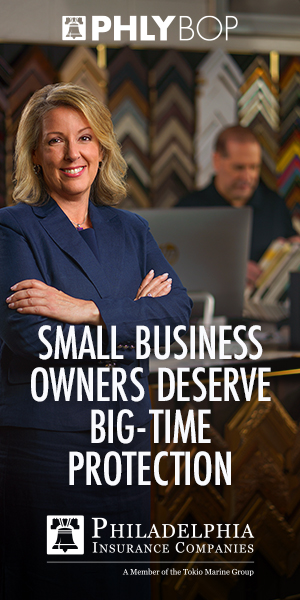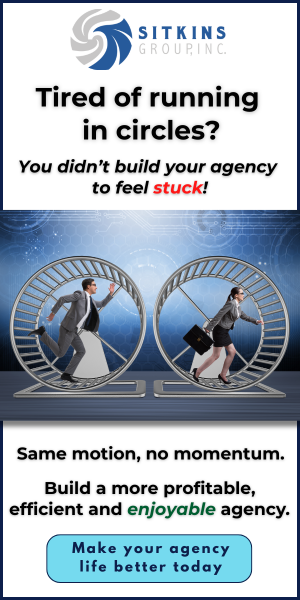 Nine basic principles to help
Nine basic principles to help
you accomplish more without lengthening your workday
All hours invested in work are not created equal. You can …
end the day feeling overwhelmed and accomplish little, or you can
leave feeling satisfied and motivated because you accomplished something that really matters.
By Kimberly Paterson, CEC
If you feel like the world around you is spinning faster than ever, you’re right. All evidence suggests that the pace of work and change is unlikely to slow down anytime soon. If anything, the pace will continue to accelerate. Ray Kurzwell, Futurist and winner of the National Medal of Technology and Innovation, says, “It is not the case that we will experience 100 years of progress in the 21st century. Rather, we will witness in the order of 20,000 years of progress.”
Thriving in today’s work environment depends on a high degree of self-control. If you don’t have reasonable control over yourself, circumstances or someone else will always have the power over you. Working smarter, not harder, begins with self-control.
Building your self-control muscle means setting and sticking to nine basic principles:
- Establish set work hours. Humans function better with clear boundaries. Think about how much more efficient you are the day before you leave for vacation. You know you have limited time to accomplish things. You get brutally realistic about what you can accomplish, set clear priorities, limit distractions and maintain focus.
Without clear targets for when your workday begins and ends, tasks tend to expand, and it’s easy to get sidetracked by others’ issues and low-value activities. Some days will require flexibility; that’s okay. The key is making honoring your hours the norm. - Concentrate on value, not effort. It’s easy to mistake activity for productivity. Just because you’re working hard and doing a lot doesn’t mean your efforts make an appreciable difference. Know your value. What are the things you do that others can’t, or do considerably better that bring value to the organization? These are the tasks you want to focus on. When you determine your priorities, ask yourself, “What is the highest and best use of my time?” Continuously review priorities to make sure they align with your high-value tasks.
- Plan and time block. Most people are great at setting goals and planning but weak in execution. The root cause is often being unrealistic about what they can accomplish. There is a limit to our bandwidth, and most of us overestimate it. This is known as the planning fallacy—a cognitive bias that leads us to consistently underestimate timelines despite knowing that similar tasks have taken longer in the past. As a result, we can keep adding things to our plate without subtracting.
Time blocking helps bridge the gap. Instead of just preparing a daily or weekly to-do list, choose your priorities, estimate how much time each will take, and block the needed time on your calendar. Being realistic about what you have to do and how much time it takes will help you stay focused and significantly increase the odds of achieving your priorities. It will also prevent you from overcommitting and disappointing others. - Schedule time to think. People hesitate to do this. That’s because “doing” feels productive; “thinking” feels like being idle and wasting time. When you run from activity to activity, with no breaks in between, you’re operating on automatic pilot. That makes it difficult to tune out the noise, stay focused on meaningful issues, and make smart decisions. When you plan, be sure to build in time to think and reflect.
Recognize the power of environment. The environment is a potent trigger waiting to pull us off track. The smell of a porterhouse steak sizzling on the grill makes us ignore our goal to cut back on red meat. Your colleague is working after hours finishing up a new business. You don’t want to look like a slacker, so you stay late and skip going to the gym.
- The environment continuously intervenes and shapes our behavior. If you don’t take steps to regulate your environment, it will control you. Protect yourself by:
Anticipating. If you were making an important sales presentation, holding an employee town hall or asking for a raise, you’d hone your story, rehearse and anticipate the objections. That’s because when it’s important, we’re good at anticipating. Apply the same principle to your day. Anticipate how you want your day to go. Visualize it and lock it in your mind. Then, consider the obstacles that might get in the way. Think through how you will deal with them.

- Sometimes our smartest response to an environmental trigger is to avoid it. This is easy when it comes to avoiding something you don’t like, but not so easy when it’s something pleasurable. Let’s say you like negotiating with your carriers, but it’s not really your job; it’s the marketing department’s domain. You overhear a conversation relating to your account and start asking questions. Once involved, you keep getting follow-up phone calls and emails that get in the way of your real responsibilities. In this case, avoiding means not wandering into the marketing department in the first place. Once engaged, you’ll find it hard to stop.
- Some things in the environment can’t be changed or avoided. This is when you have to adjust. For example, if you’re a person who needs quiet to concentrate and you work in an open-plan office where people are constantly talking, buy yourself a pair of noise-canceling headphones.
- Avoid multi-tasking. Multi-tasking is the norm in many workplaces, but the fact is it literally drops your IQ and productivity. It leads you to make stupid mistakes, miss cues and fly off the handle when you shouldn’t. That’s because constant multi-tasking triggers conflict in the brain that slows you down and increases stress. Trying to complete two or more tasks at once can take 50% more time or longer, depending on the complexity of the tasks. Stopping to answer a colleague’s question while you’re in the middle of something has a similar effect.
When we switch between tasks, our brains must halt any processing of the current rule set and load a new rule set for the next task. This happens quickly. But halting, unloading, loading, and restarting takes a toll on the brain and slows you down.
- Get comfortable saying “no.” Think how often you say “yes” when the voice in your head is screaming “no.” It’s understandable that we’re reluctant to say “no.” We worry that we may offend a co-worker, damage a relationship, hurt our reputation, be viewed as not being a team player or seen as unwilling to take on more responsibility. Saying “yes” makes us feel needed and valued by our colleagues. When you feel appreciated, dopamine (the feel-good hormone) is immediately released in the brain.
What’s missed is the reality that saying “yes” often comes with a price tag because we’re saying “no” to something else. That something may be important like working on a critical long-term project you’ve been putting off or spending time with family. Before you default to “yes,” ask yourself these questions:
- Does it align with my goals and priorities?
- Does it align with the organization’s priorities?
- What is the cost to me and the organization of saying “yes?”
- Does it benefit me (e.g., an opportunity to learn or demonstrate a skill)?
- Do I have the bandwidth?
- Calculate meeting ROI. Meetings are a huge drain on your time. Before you say, “Let’s meet” or you agree to attend one, think ROI. What’s the cost of sitting at the table? Not just your hourly rate but the cost of everyone in the room. Labor expense is only part of the equation. Lost opportunity cost is also a consideration.
What would or could you and others be doing for the business if you weren’t tied up in the meeting? Is the value of what stands to come out of the meeting worth the investment? - Think return on effort. People with high standards often struggle to determine trouble when good is good enough. Everything has to be their very best, even though the incremental improvement in quality is unlikely to impact the outcome. One way to overcome this tendency is to define the standard that needs to be met based on what’s at stake. Before you start working, set a boundary on how much time it makes sense to invest.
All hours invested in work are not created equal. You can work ten hours, end the day feeling overwhelmed and accomplish little, or you can leave work feeling satisfied and motivated because you accomplished something that really matters. It comes down to control—self-control and not surrendering your control to others. Many of us have come to believe that control is an illusion.
While wise on the surface, the danger in having this belief is that we begin to think and act as if we have no control. That, too, is an illusion. In truth, we have a tremendous amount of control. The key is not to squander it.
The author
Kimberly Paterson, Certified Executive Coach and Master Energy Leadership Coach, is president of CIM (www.cim-co.com). CIM works with organizations and individuals to maximize performance through positive lasting behavioral change. Her clients are property and casualty insurance companies, agencies and brokers. She can be reached at kpaterson@cim-co.com. Follow Kimberly on www.linkedin.com/in/kimberly-paterson.




